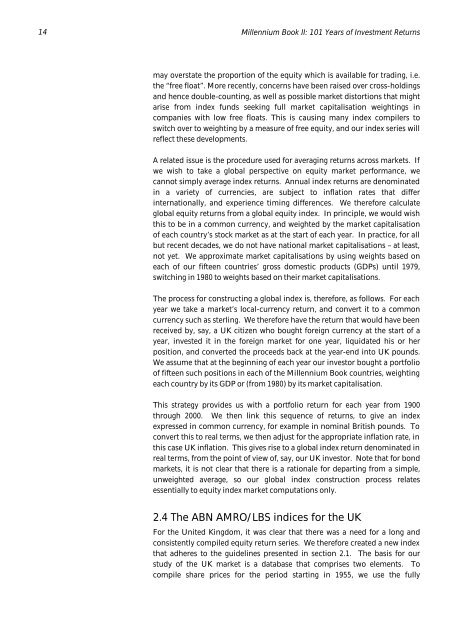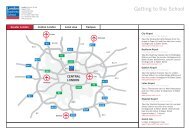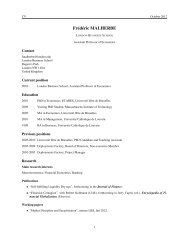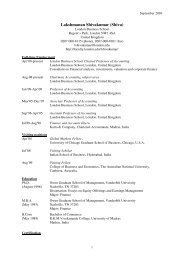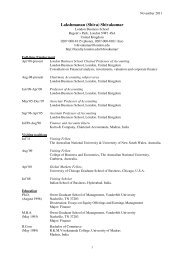101 Years of Investment Returns - London Business School
101 Years of Investment Returns - London Business School
101 Years of Investment Returns - London Business School
You also want an ePaper? Increase the reach of your titles
YUMPU automatically turns print PDFs into web optimized ePapers that Google loves.
14<br />
Millennium Book II: <strong>101</strong> <strong>Years</strong> <strong>of</strong> <strong>Investment</strong> <strong>Returns</strong><br />
may overstate the proportion <strong>of</strong> the equity which is available for trading, i.e.<br />
the “free float”. More recently, concerns have been raised over cross-holdings<br />
and hence double-counting, as well as possible market distortions that might<br />
arise from index funds seeking full market capitalisation weightings in<br />
companies with low free floats. This is causing many index compilers to<br />
switch over to weighting by a measure <strong>of</strong> free equity, and our index series will<br />
reflect these developments.<br />
A related issue is the procedure used for averaging returns across markets. If<br />
we wish to take a global perspective on equity market performance, we<br />
cannot simply average index returns. Annual index returns are denominated<br />
in a variety <strong>of</strong> currencies, are subject to inflation rates that differ<br />
internationally, and experience timing differences. We therefore calculate<br />
global equity returns from a global equity index. In principle, we would wish<br />
this to be in a common currency, and weighted by the market capitalisation<br />
<strong>of</strong> each country’s stock market as at the start <strong>of</strong> each year. In practice, for all<br />
but recent decades, we do not have national market capitalisations – at least,<br />
not yet. We approximate market capitalisations by using weights based on<br />
each <strong>of</strong> our fifteen countries’ gross domestic products (GDPs) until 1979,<br />
switching in 1980 to weights based on their market capitalisations.<br />
The process for constructing a global index is, therefore, as follows. For each<br />
year we take a market’s local-currency return, and convert it to a common<br />
currency such as sterling. We therefore have the return that would have been<br />
received by, say, a UK citizen who bought foreign currency at the start <strong>of</strong> a<br />
year, invested it in the foreign market for one year, liquidated his or her<br />
position, and converted the proceeds back at the year-end into UK pounds.<br />
We assume that at the beginning <strong>of</strong> each year our investor bought a portfolio<br />
<strong>of</strong> fifteen such positions in each <strong>of</strong> the Millennium Book countries, weighting<br />
each country by its GDP or (from 1980) by its market capitalisation.<br />
This strategy provides us with a portfolio return for each year from 1900<br />
through 2000. We then link this sequence <strong>of</strong> returns, to give an index<br />
expressed in common currency, for example in nominal British pounds. To<br />
convert this to real terms, we then adjust for the appropriate inflation rate, in<br />
this case UK inflation. This gives rise to a global index return denominated in<br />
real terms, from the point <strong>of</strong> view <strong>of</strong>, say, our UK investor. Note that for bond<br />
markets, it is not clear that there is a rationale for departing from a simple,<br />
unweighted average, so our global index construction process relates<br />
essentially to equity index market computations only.<br />
2.4 The ABN AMRO/LBS indices for the UK<br />
For the United Kingdom, it was clear that there was a need for a long and<br />
consistently compiled equity return series. We therefore created a new index<br />
that adheres to the guidelines presented in section 2.1. The basis for our<br />
study <strong>of</strong> the UK market is a database that comprises two elements. To<br />
compile share prices for the period starting in 1955, we use the fully


